About us
Crisler Library through the years
With a story that covers more than 25 years and four continents, Crisler Library has always been faithful to its motto of promoting scholarship, research, and education concerning the development of early Christianity in Asia Minor and Palestine.
Finding a Menorah at the Celsus Library

In the summer of 1977 B. Cobbey Crisler joined forces with his archaeological friend Bob Bull and with Gordon Converse, whose photographs had graced the pages of The Christian Science Monitor for years. Cobbey and Gordon went to the Middle East to prepare the book, published the next year by Prentice-Hall, title Come See the Place: The Holy Land Jesus Knew. Two years later the same team put together another book for Prentice-Hall, this one called Fishers of Men: The Way of the Apostles. By the time of the second book Cobbey and I —Janet, his wife — had resigned from our duties at the Daycroft School where Cobbey had been president for a dozen years and had moved across the country to Carmel, California.
For this companion to the earlier book Cobbey wanted readers to identify — visually, historically and archaeologically — with Paul, John, Peter, Philip and the other apostles as they taught Christianity westward through the ancient world.
Something happened during the research for Fishers of Men that has always struck me as remarkable. This was especially so since Cobbey wanted to specifically retrieve through archaeological excavation the places where early first century Bible events occurred. Paralleling research with his co-authors was his separate research project: locations of the Jewish Diaspora in Asia Minor. For Paul, John, Peter and the other apostles, Judaism was an indispensable link. Its synagogues provided Christianity’s first audiences.
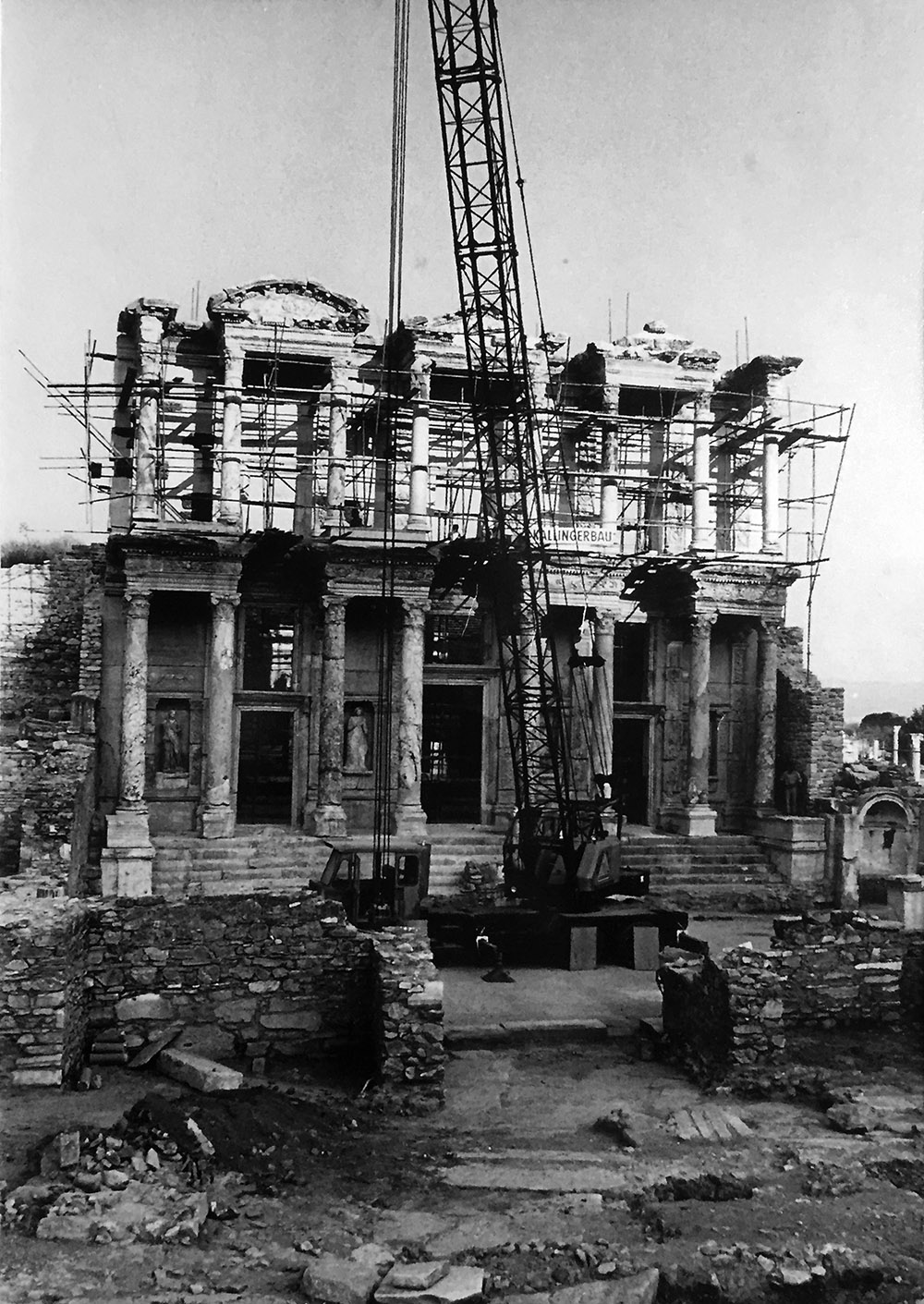
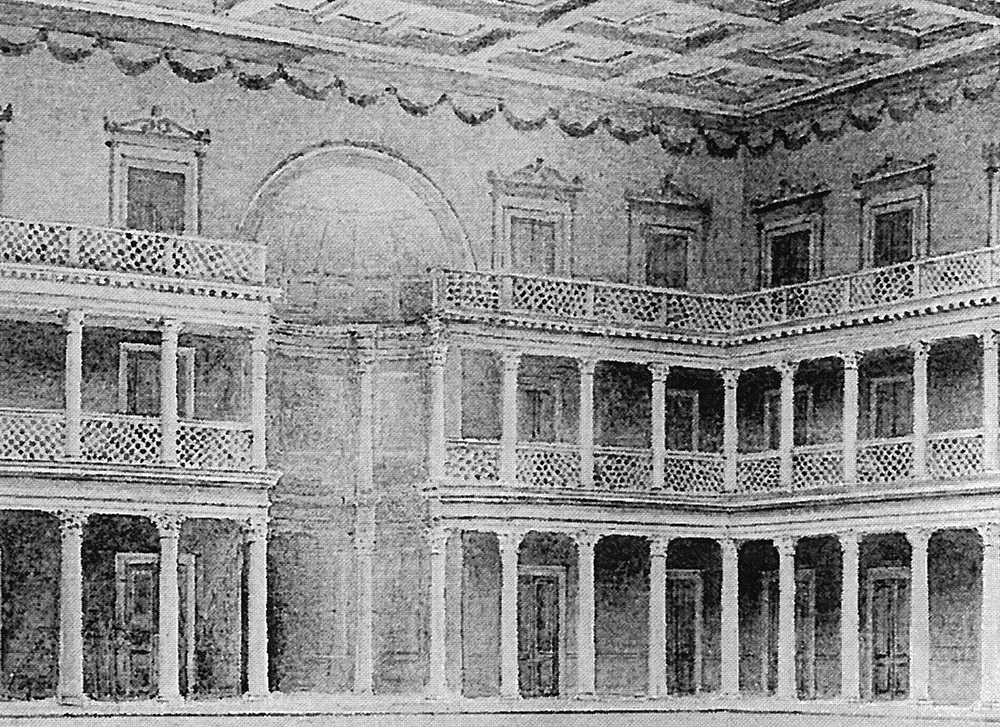
We were in Ephesus. There the restoration of possibly the city’s most significant ancient structure, the Celsus Library, was taking shape. During our first visit to the city seven years before, the library was hardly more than nine stairs and a truncated frame. Cobbey remembered seeing somewhere on the library’s platform or steps a crudely scratched menorah — that is, an image of a candelabrum with seven arms, a traditional symbol of Judaism. At that time, despite historical references to it, archaeologists had found little evidence of a Jewish presence in Ephesus. The synagogue there — where Acts tells us Paul preached for three months, lodging probably with Aquila and Priscilla — has so far defied excavators. So this lone menorah could provide archaeological evidence of a Jewish presence in Ephesus during the second century A.D.
To photograph Ephesus’s ancient architecture, Cobbey, Converse and Bull were able to enter its protected area shortly after dawn. At that time they could work suffused in the early morning’s delicate light — photographers call it “the magic hour” — without interruptions of bustling crowds. After other appointments Cobbey returned to the Celsus Library. There he met the architect of the Austrian expedition restoring the building, Dr. Friedmund Hueber. Hueber vaguely remembered mention of the menorah in early documentation about the building, but he feared the restoration of the library’s façade had coated its steps and platform with uneven layers of mortar. These had spilled, while wet, from the works above.

After the Austrian archaeologists departed fro lunch, Cobbey started to search for the menorah. He scraped off dried mortar. He liberated the platform and the stairs from its gray shell. Worked several hours. No menorah.

Like the Austrians, Converse and Bull left for lunch. Cobbey kept working. Converse and Bull returned from lunch with the men’s three wives. Cobbey was still working. Bull and I insisted we needed to leave. We all were wilting in the heat. There were other sites to photograph and explore, other contacts to be made. Cobbey resigned himself to our needs. With a last desperate sweep of the stairs he prepared to leave. Suddenly at his feet appeared the undeniable form of a menorah. He had found it!
Scratched on the stair perhaps a generation after John’s recording of the Apocalypse was a haunting conjunction of Jewish and Christian symbolism. Cobbey’s persistence had uncovered it.
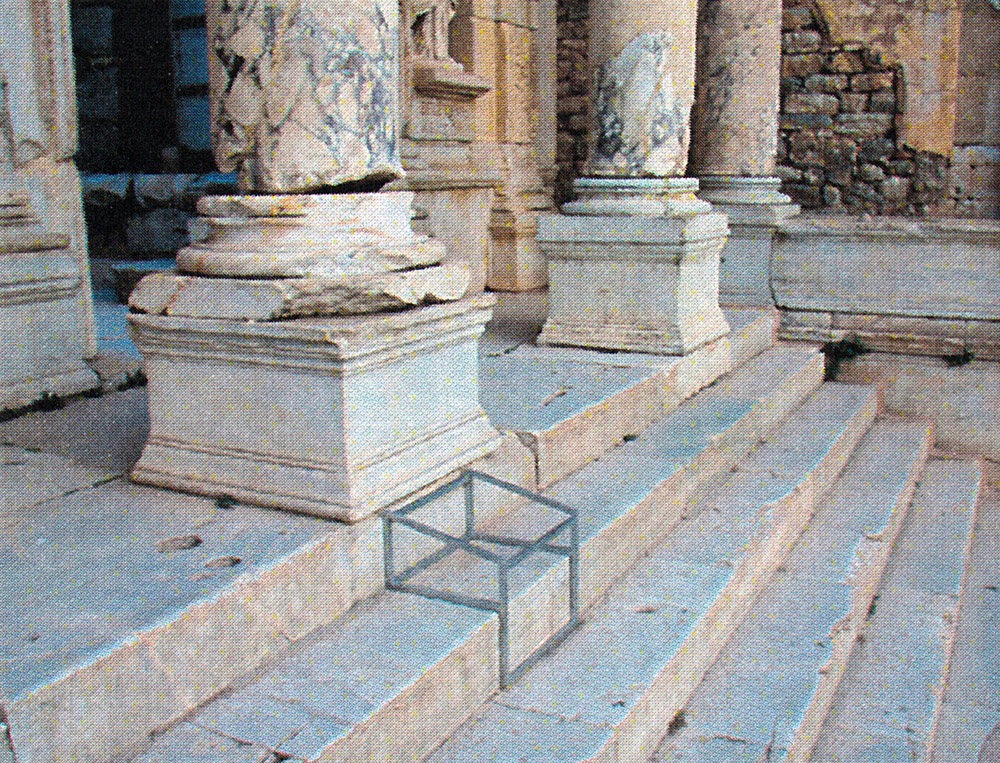
Since that time, whenever I returned to Ephesus, I think of his elation at the payoff of his perseverance. And I always enjoy watching as knowledgeable tour guides point out the little menorah on the step and tourists exclaim and set their cameras to clicking. In a small way that’s the payoff of the excavation work he so enjoyed.
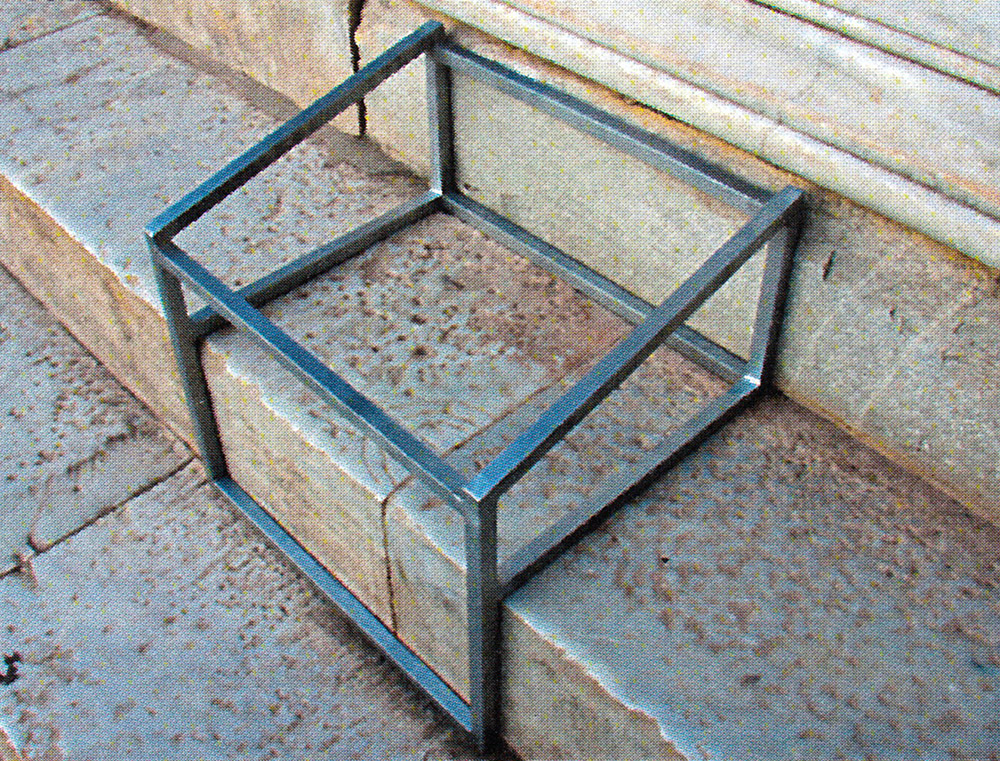
In 2009 I received permission to have the Austrian excavation restorer design and install a steel frame to surround the precious graffiti. It protects the menorah from the thousands of tourist feet that have slowly begun to eliminate its historical significance.
So when I arrived in Turkey, tired and perspiring in the heat, with only a cat for a companion and wondering what I was doing at Ephesus, I remember Cobbey’s delight at finding the little menorah. And I felt sure that if he knew, he’d be delighted that I had committed to continuing his work.
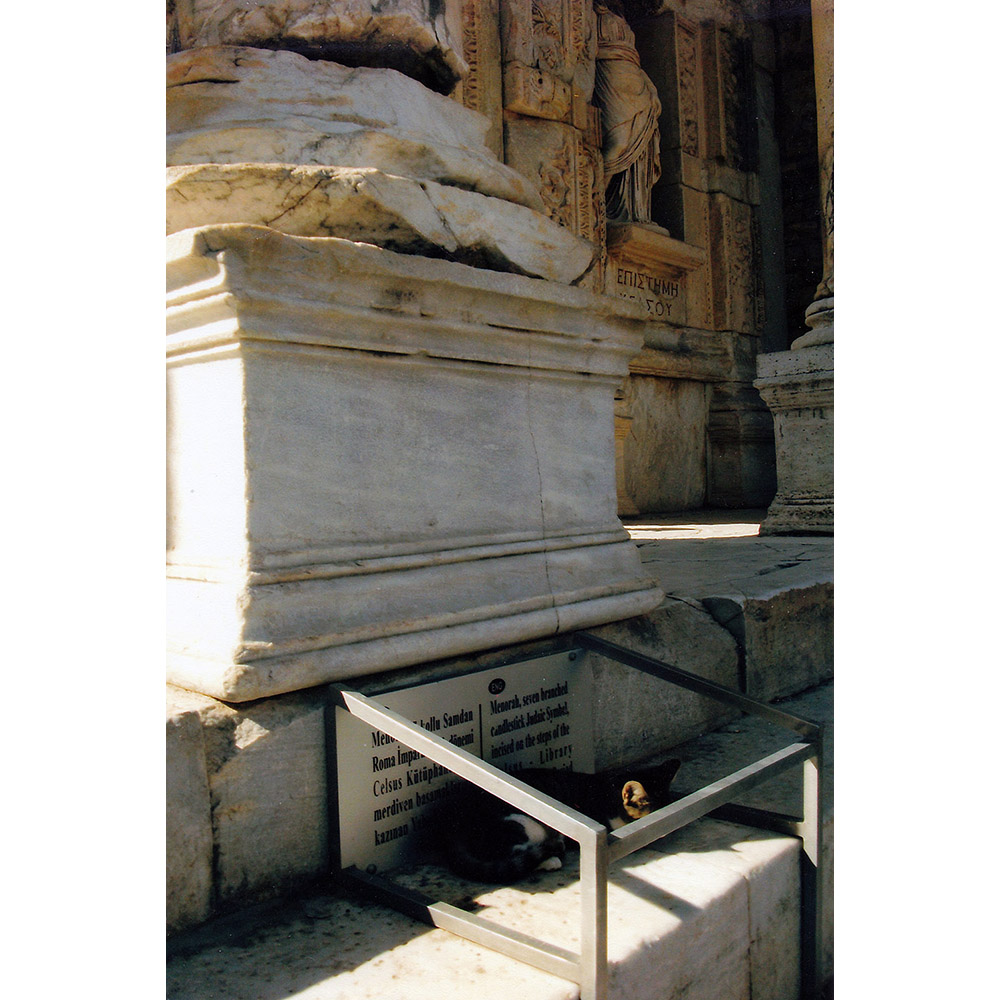
Crisler Library at Ephesos

In 2002, the Crislers’ longtime friend Professor David Noel Freedman, member of the original translation committee of the Dead Sea Scrolls, urged Mrs. Crisler to establish a presence in Turkey and continue there with her husband’s work. She had the background to do this, as a partner in her husband’s work and her activity in the archaeology community, including as a member and trustee of the W. F. Albright Institute of Archaeological Research in Jerusalem and member of the excavation team of Herod the Great’s Port City of Caesarea Maritima.
Turkey was selected for the library because of Mr. Crisler’s keen interest in early Roman archaeology in Asia Minor and in its historic development as it impacted western world culture and development. He had given some of his most memorable talks at the great sites throughout Turkey (ancient Asia Minor) and had also made a significant discovery at Ephesos in 1978 of a graffiti menorah on the steps of the Celsus Library, as part of a wider project in Greece and Turkey for evidence of the early first-century Jewish diaspora. This graffiti was the only lithic evidence at that time of the existence of a Jewish community at Ephesos.
The Crisler Library Ephesos (CLE) was located in Selçuk, Izmir, a small city in western Turkey, four miles from the Aegean Sea, near Ephesos. It is a short distance from the Ephesos Museum, at the foot of Ayasoluk Hill, within view of the Basilica of St. John, near the Isa Bey Mosque, and across the street from the ruins of the Temple of Artemis, one of the Seven Wonders of the Ancient World. It also was centrally located to other ancient historical sites, including Sardis, Pergamon, Aphrodisias, Hierapolis, Laodicea and Claros.


With the support and guidance of the Board of Trustees, a Scholars Advisory Board, and an International Advisory Board of individuals with expertise and businesses in Turkey, Mrs. Crisler, Founder and President, built CLE and developed its programs to fulfill CLE’s mission.

On July 25, 2003 Janet Crisler landed in Turkey with the goal of building a library and in 2006 her dream was realized when the CLE opened its doors in Selçuk, three kilometers from ancient Ephesos, one of the most important Hellenistic and Roman sites in the world. CLE started with Mr. Crisler’s book collection and early manuscript pages dating to the 1500s. It had a growing collection of over 5,000 books, associations with the top Ephesos scholars, study programs and meeting facilities, and became a destination for the study of Ephesos, from prehistoric to modern times. It was the only center of its kind adjacent to an ancient site in the western Aegean.
The Crisler Library at Ephesos (CLE), an American 501(c)(3) organization, was founded by Janet V. Crisler in 1999 to honor her late husband, B. Cobbey Crisler, Near East scholar and lecturer, through archaeology and manuscript preservation.
The programs at CLE provided on-site research resources, education, training and a platform for dialogue, as well as promoted cross-cultural and cross-borders understanding, for its target audience was an international one composed of university students, youth, scholars and interested adults from Turkey, the United States, Europe and the Middle East. Over 100 university students participated in the programs held in Turkey, where the cultures of East and West meet. The students commented, in their evaluations, on the excellence of the academic programs and on the opportunity to learn from the experts on Ephesos as well as to engage with students from other countries. It has been a life-changing experience for many.
International Summer Session for Archaeology
The Crisler Library in Ephesos International Archaeology Seminar for students strived to be a model archaeology seminar for qualified undergraduates and graduate students from diverse cultural and disciplinary backgrounds to foster a deeper understanding of the ancient history of scholarship that shaped this region’s society. The seminar aspired to offer a world-class educational experience in which students walked where Western civilization began, learned in a 2000 year-old setting, and touch the stones while hearing on-site lectures by professional experts.

The international Summer Session for Archaeology (ISSA) was implemented from 2009 to 2013 in Selcuk and environs. The 2013 program has been organized according to frequently asked wishes by students for an Advanced Program. All participants have been students of one of the ISSA programs 2009 to 2012, which means they came a second time to Selcuk, CLE and Ephesos. The program has been held with a focus on two main subjects. One being the exploration of an ancient site, demonstrated through reports about surveys and history of excavations. The second subject was about conditions and questions towards becoming a “World Heritage Site”. Under these aspects excursions led us to Magnesia on the Meander, Kolophon, Claros, Notion, Tire and Aphrodisias.

The eight participants of ISSA 2013 came from Turkey (1), Palestine (3), USA (2), Bosnia-Herzogowina (1) and Germany (1). Most of them were graduates or Ph.D. students; their academic fields again were archaeology, architecture, history, classics and biblical studies. Lectures were given by Prof. Mahmoud Hawari (Oxford University, UK and Birzeit University, Ramallah, Palestine), Dr. Ulrike Muss (University Vienna, Austria), Dr. Hilke Outschar (Austrian Historical Institute Rome, Italy), Dr. Hilke Thuer (University of Vienna, Austria), Benjamin Wieland (Freiburg University, Germany) and Dipl. Ing. Gilbert Wiplinger (Frontinus Gesellschaft Bonn, Germany). Additionally every student prepared and presented a paper.
The main organization of the program had been prepared in advance by Dr. Hilke Thuer and Janet Crisler.
The main focus of the program again was the ancient site of Ephesos. Two visits to the site including a visit to Terrace House 2 were combined with teaching at the site. During a third day Gilbert Wiplinger showed the newest results from the aqueducts. The walks to and in Ephesos plus the above mentioned excursions were interrupted by days with lecturing, discussions and time for preparation for the students' papers. Lectures and studies in the air conditioned conference hall and research room at CLE have been highly valued as cooling interruptions between the long days in the summer heat. The library with its 5000 volumes, the working stations with internet and WiFi and the copiers were used by students and lecturers far into the nights.
According to the subject of the 2013's program the opening lecture dealt with the History of Research and Excavation in Ephesos (H. Thuer) which included our first walk to Ephesos beginning in the Artemision and on to the Stoa built by Damianus in the 2nd c. AD, to the Magnesion Gate and theKoressian Gate situated between the stadium and Vedius Gymnasium. Passing the Magnesian city gate near the upper agora we followed the processional way inside the city walking down the Kouretes street to the “Triodos Gate” near the Celsus Library, where one branch of the way led to Ortygia in the Arvalia Valley as the mythic birthplace of Artemis and Apollo, and the other branch leading to the theatre and along the western slope of 'Panayirdag' (Mount Koressos) to the Koressian Gate and back to the Artemision. During a second day in Ephesos M. Hawari gave a lecture with vibrant discussion about the conditions and questions necessary for exploration of a potential 'World Heritage Site'. Thanks to the support of the Efes Museum, Selcuk, a visit to the Inscription Museum and to Paul's Cave completed our program. In the substructions of Domitian's Terrace, B. Wieland could show us the inscriptions illustrating his earlier lectures.
In one of our excursions we visited the site of ancient Kolophon, being well informed by an introductory lecture by Ulrike Muss. She showed and explained the methods, questions and results of a survey, which she is carrying out in cooperaton with the Mimar Sinan University in Istanbul and Vienna University. As part of the Kolophon excursion, the sanctuary of Claros and the Harbour city Notion were visited. Another excursion led us to Magnesia on the Meander, where we received a friendly welcome and guided tour around the site by Director of the excavations, Pro. Dr. Orhan Bingol (Ankara University). Students and professors were highly impressed by the excavation of the well preserved stadium.
Another excursion brought us to Tire, where the Archaeological Museum and the Museum for Ottoman Books as well as the numerous Islamic buildings were visited. Especially the frescoes in the Yahsi Bey Mosque attracted our interest. Also appreciated were the traditional handicrafts, i.e. silk production and weaving, felting and the production of copperware all produced in Tire and sold at the traditional Tuesday Market. The site for our final excursion was Aphrodisias, where we heard an exceptionally well prepared introductory lecture by Ulrike Outschaar, who is a member of the excavation team, about the excavation history plus goals for the current work. At the site Field Director, Dr. Alexander Sokolicek explained the exciting results of the previous years' dig, situated at the main road between the Tetrapylon and the Propylon into the Sebasteion. There, Architect Thomas Kaefer explained the method and aims of the rebuilding program in the Sebasteion and the newly begun work with the Propylon blocs. Katherine Welsh gave us a tour in the museum and accompanied us to the stadium. During our tour through the site we discussed the excellent presentation of the site and its monuments, i.e. the very informative signage, the marked tours and ways through the excavation; particularly appreciated were the signs and benches situated mostly in the shadow of a tree.

In two sessions the participating students presented their papers. Despite their widespread fields and backgrounds most of them chose subjects pertaining to excavation history, current situation and presentation of a site. The three participants from Palestine spoke about 'Hisham's Palace' near Jericho (Nourah Sammar) and plans for site management (Alaa Aboghoush) and a management plan for the antique site of Sebastia (Jana Araj). One paper referred to the 'Use of Space in Diocletians Palace in Split' (Marko Barisic) and one with the remains and presentation of the different archaeological remains in Izmir in Bayraki and the Hellenistic Roman agora (Sinem Cakir). Justin Schedtler and Jill Marshall chose an aspect of their current scientific work. Justin spoke about 'Theatres in Asia Minor in Classical, Hellenistic and Roman Times' and Jill gave an interpretation of the frescoes with Thekla, Paul and Theoklia in Paul's Cave at Ephesos. Benjamin explained his conclusions and the interpretations of an inscription concerning a second and third 'Neokoria' in the time of Emperors Caracalla and Gaeta.
Summer Session 2013 again has been a full success and has been highly valued by the participants. The students had been informed during the welcome session by a message from Janet concerning the critical financial situation of CLE and the plans for selling the building in Selcuk. This bad news caused long and intensive discussion between the students, the lecturers and after her arrival. The results of a meeting held on the last day between Janet Crisler, Mahmoud Hawari, Hilke Thuer, Justin Schedtler and Jill Marshal, has been defined by J. Schedtler into a letter to the CLE Trustees asking for some months of time to formulate and to develop new 'young' strategies for running CLE in Selcuk.
Crisler Library Cyprus

In 1956 B. Cobbey Crisler, after receiving his Bachelor Degree at Harvard University won an appointment to Oxford University. Circumstances changed. His continuing quest for further Biblical textural scholarship went forward. Unfortunately his untimely death prevented completion of his research. Now, Crisler Library Cyprus has been established with the goal to pursue those objectives.
Last updated: Nov 2019
